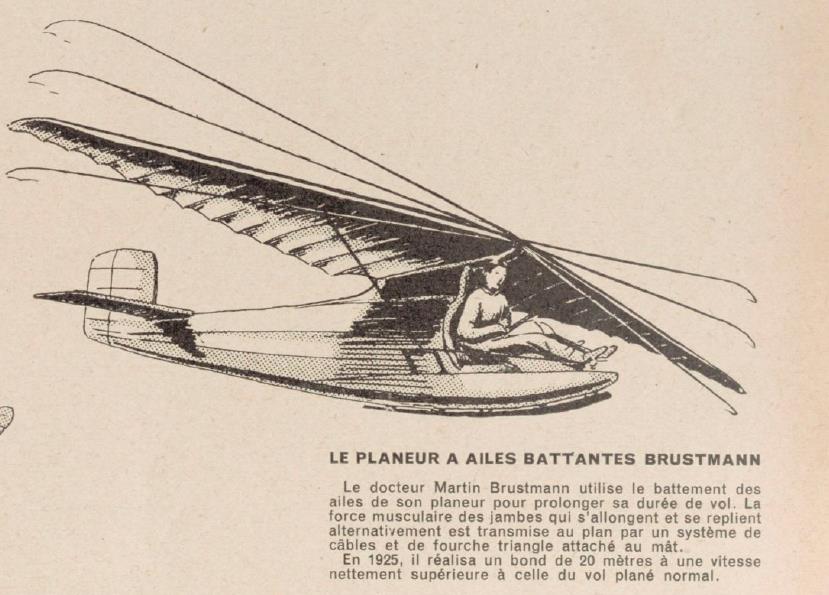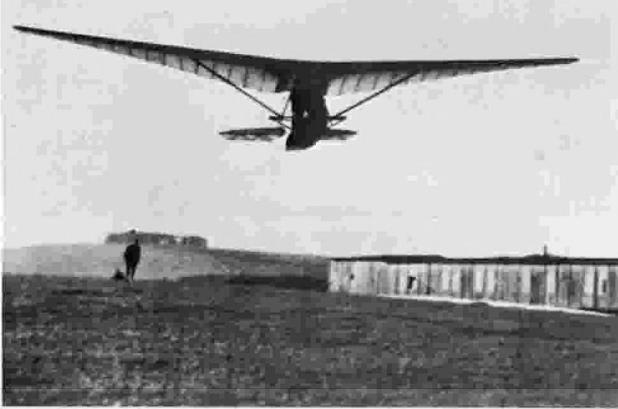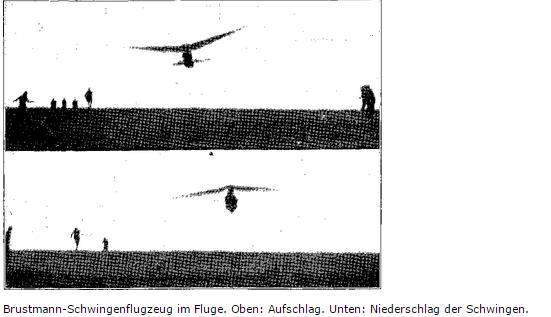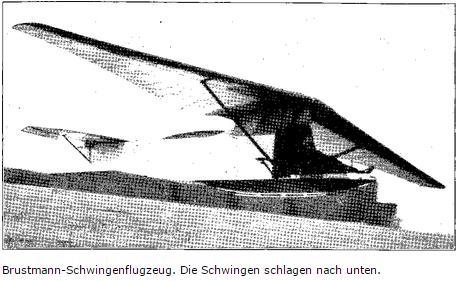An association between Lippisch and Dr. Martin Brustmann which was to
continue for many years appears to have formed at this time. Brustmann in the
1920s carried out studies into the power outputs of humans, based or. hia
experience IS an expert on xedical matters, specifically physiology, related
to sport. He prcduccd figures on the short duration power outputs of athletes,
stating that a man could produce up to 1.5 kK in a very short burst.'reducing
to a continuous output of 0.19 kW.
Brustntann proposed means for utilising as many as possible of the muscles
in the body, the total weight of muscle being used amounting to approximately
25 per cent of the total body weight. Brustmann suggested using the arm and
chest muscles, in conjunction with the main leg muscles, in a combination of
arm movement and the oarsman's roller sliding seat. (It is of interest to
note here that Everling, writing in 1934, describes how he applied for a
patent, in conjunction with Erich Offermann, in 1924. This patent was not
granted, but the invention he described was an extension of the ideas put-
forward by Brustmann. The main feature of the design was a means for over-
coming the severe shift in the position of the centre of gravity which is
associated with a sliding seat. Such movements would of course be unacceptable in an aircraft, as the pilot would be continuously compensating, using the controls, for the resulting pitch angle changes.
Various claims were made for the total power generating capability of a
man using such a combination of muscles. Everling believed that 1.9 kW would
be achieved momentarily by a trained oarsman, but Brustmann is reported to
have quoted a figure 5.3 kW being attainable for periods of less than ten
seconds. This remains the highest value claimed for human power output in
the context of man-powered flight.)
A few years later Brustmann, aided by Lippisch, constructed an ornithopter
with a wing span of about 10 metres and an empty weight of 30 kg. A young
athlete, who was also a pilot, Hans Werner, carried out the first flight
trials, which were performed on a downward incline (Fig. 49). After several
attempts, a flight of about three-hundred metres'was reported to have been
achieved. In this distance, eleven flappings of the wing were carried out.
It is doubtful whether such exertions extended what was in fact a glide.
I.ippisch, in criticising the machine, complains of the inadequacy of the
transmission (this being via cables running over pulleys), but heralds the
fact that it flew. Following these early attempts, Brustmann took his aircraft
to Berlin to give demonstrations. However, he attached a large undercarriage
to the fuselage, with the result that the machine was unable to take off!
I.ippisch then appears to have attempted to further his work alone. In the
summer of 1933 he carried out experiments on wings for man-powered aircraft,
but his tests were cut short by his enforced transfer to another research
establishment at Darmstadt.



Brustmann Schwingen fIugzeug.
1924—25 begannen auf der Wasserkuppe die führenden Persönlichkeiten, die Flugforschung auch auf andere Flugarten auszudehnen. In den damaligen Rhön-Ausschreibungen waren bereits entsprechende Preise für Leistungen anders gearteter Flugarten ausgesetzt. Die damaligen Ergebnisse waren naturgemäß, da dieses schwierige Problem sehr schwer zu lösen war, recht spärlich. In gewissen Kreisen sprach man von einem Stillstand der Segelflugbewegung und Aussichtslosigkeit derartiger Forschungs-arbeiten. Unter den im Jahre 1925 gemeldeten Bewerbern befand sich Dr. Martin Brustmann mit einem Schwingenflugzeug. Trotz der entmutigenden Versuche während des Wettbewerbs gab Brustmann seine Arbeiten nicht auf und vollbrachte 4 Tage nach dem Wettbewerb einen Sprung von 15-20 m
Länge. Ein kleiner Lichtblick !
Aber trotzdem ging es nicht vorwärts. Zunächst unterbrachen Geldmangel die Versuche, bis er 1928 einen gleitfähigen Rumpf ei ndecker mit beweglichen Flügeln in Auftrag geben konnte. Konstruktion Alexander-Lippisch, Bauausführung A. Schleicher, Poppenhausen.
Das nur 70 kg schwere Flugzeug von 10 m Spannweite hat 12 m2 Fläche, keine Verwendung, normales Höhen- und Seitensteuer an einem Knüppel angeschlossen. Der Flügelniederschlag erfolgt durch Strecken der Beine, die Kraftübertragung durch Seilzüge und Rollen auf ein Durairohrdreieck, das im Druckmittelpunkt des Flügels angreift. Das Flugzeug leistet in der Ebene mit Seilstart Gleitflüge von 6-10 Sek. Dauer bei 8-10 Sek/m Geschwindigkeit. Unter Schwingenschlag wird die im Gleitflug
erzielte Strecke bis auf das Doppelte verlängert, die Fluggeschwindigkeit auf 12-15 Sek/m gesteigert. Der Kraftaufwand zum Schwingenflug entspricht etwa dem beim Rennrudern. Das Flugzeug ist von Hans Werner Krause und Fritz Stamer auf der Wasserkuppe eingeflogen worden. Krause hat schon über 60 gelungene Schwingenflüge damit ausgeführt.
Zur Förderung des Schwingenfluges wäre erwünscht, wenn die RhÖn-Rossitten-Gesellschaft noch einmal im Wettbewerb Preise ausschriebe für „mit Menschenkraft betriebene Flugzeuge", die ihre Gleitflugstrecke durch Menschenkraft um einen bestimmten Prozentsatz verlängern sollen.




